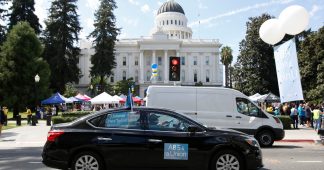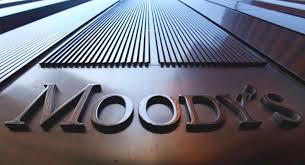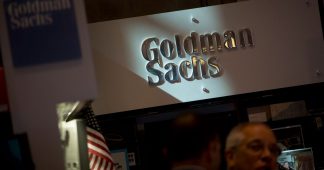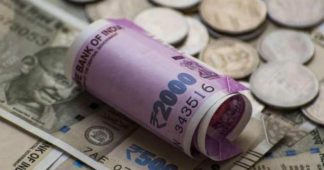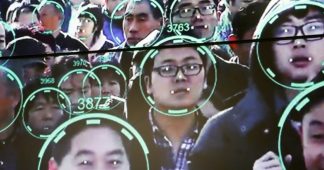Since it began operations in 2010, Uber has grown to the point where it now collects over $45 billion in gross passenger revenue, and it has seized a major share of the urban car service market. But the widespread belief that it is a highly innovative and successful company has no basis in economic reality.
An examination of Uber’s economics suggests that it has no hope of ever earning sustainable urban car service profits in competitive markets. Its costs are simply much higher than the market is willing to pay, as its nine years of massive losses indicate. Uber not only lacks powerful competitive advantages, but it is actually less efficient than the competitors it has been driving out of business.
Uber’s investors, however, never expected that their returns would come from superior efficiency in competitive markets. Uber pursued a “growth at all costs” strategy financed by a staggering $20 billion in investor funding. This funding subsidized fares and service levels that could not be matched by incumbents who had to cover costs out of actual passenger fares. Uber’s massive subsidies were explicitly anticompetitive—and are ultimately unsustainable—but they made the company enormously popular with passengers who enjoyed not having to pay the full cost of their service.
The resulting rapid growth was also intended to make Uber highly attractive to those segments of the investment world that believed explosive top-line growth was the only important determinant of how start-up companies should be valued. Investors focused narrowly on Uber’s revenue growth and only rarely considered whether the company could ever produce the profits that might someday repay the multibillion dollar subsidies.
Most public criticisms of Uber have focused on narrow behavioral and cultural issues, including deceptive advertising and pricing, algorithmic manipulation, driver exploitation, deep-seated misogyny among executives, and disregard of laws and business norms. Such criticisms are valid, but these problems are not fixable aberrations. They were the inevitable result of pursuing “growth at all costs” without having any ability to fund that growth out of positive cash flow. And while Uber has taken steps to reduce negative publicity, it has not done—and cannot do—anything that could suddenly produce a sustainable, profitable business model.
Uber’s longer-term goal was to eliminate all meaningful competition and then profit from this quasi-monopoly power. While it has already begun using some of this artificial power to suppress driver wages, it has not achieved the Facebook- or Amazon-type “platform” power it hoped to exploit. Given that both sustainable profits and true industry dominance seemed unachievable, Uber’s investors decided to take the company public, based on the hope that enough gullible investors still believe that the company’s rapid growth and popularity are the result of powerfully efficient innovations and do not care about its inability to generate profits.
These beliefs about Uber’s corporate value were created entirely out of thin air. This is not a case of a company with a reasonably sound operating business that has managed to inflate stock market expectations a bit. This is a case of a massive valuation that has no relationship to any economic fundamentals. Uber has no competitive efficiency advantages, operates in an industry with few barriers to entry, and has lost more than $14 billion in the previous four years. But its narratives convinced most people in the media, investment, and tech worlds that it is the most valuable transportation company on the planet and the second most valuable start-up IPO in U.S. history (after Facebook).
Uber is the breakthrough case where the public perception of a large new company was entirely created using the types of manufactured narratives typically employed in partisan political campaigns. Narrative construction is perhaps Uber’s greatest competitive strength. The company used these techniques to completely divert attention away from the massive subsidies that were the actual drivers of its popularity and growth. It successfully framed the entire public discussion around an emotive, “us-versus-them” battle between heroic innovators and corrupt regulators who were falsely blamed for all of the industry’s historic service problems. Uber’s desired framing—that it was fighting a moral battle on behalf of technological progress and economic freedom—was uncritically accepted by the mainstream business and tech industry press, who then never bothered to analyze the firm’s actual economics or its anticompetitive behavior.
In reality, Uber’s platform does not include any technological breakthroughs, and Uber has done nothing to “disrupt” the economics of providing urban car services. What Uber has disrupted is the idea that competitive consumer and capital markets will maximize overall economic welfare by rewarding companies with superior efficiency. Its multibillion dollar subsidies completely distorted marketplace price and service signals, leading to a massive misallocation of resources. Uber’s most important innovation has been to produce staggering levels of private wealth without creating any sustainable benefits for consumers, workers, the cities they serve, or anyone else.
Uber Cannot Produce Sustainable Profits
Prior to its IPO, Uber publicly released limited P&L results. These showed GAAP net losses of $2.6 billion in 2015, $3.8 billion in 2016, $4.5 billion in 2017, and $3.9 billion in 2018.1
In its April IPO S-1 prospectus, Uber recast all its historical P&L results, allegedly to isolate the terrible results in three major markets (China, Russia, and Southeast Asia) that Uber has abandoned from the results of its ongoing operations (which are the primary concern of potential investors).2 But Uber’s S-1 included $5 billion—roughly $3 billion in divestiture gains and $2 billion representing Uber’s valuation of its untradeable equity/debt positions in the companies that took over its failed operations—as part of net income from its ongoing operations. This deliberate misstatement was designed to give potential investors the impression that the profitability of Uber’s current marketplace services had improved by $5 billion, and that Uber actually made a billion dollar net profit in 2018. If one correctly segregates ongoing and discontinued results, however, Uber’s actual 2018 profit improvement was zero. Its ongoing operations lost $3.5 billion in 2017, and lost $3.5 billion again in 2018. The company’s losses over the last four years from still ongoing operations were roughly $14 billion.3
Previously, Uber had been the only “ridesharing” company with sufficient public data to allow a detailed analysis of business model competitiveness versus incumbent operators. But the March release of Lyft’s IPO prospectus revealed that it has the same terrible economics as Uber,4 and there is no public evidence that any other “ridesharing” company (such as Didi, Grab, Ola, and other large Asian operators) has a path to sustainable profitability.
Like Uber, other well-known start-ups lost money at first, but—unlike Uber—they quickly generated the strong positive cash flow needed to fund growth. The gross fares paid by Uber passengers increased from $9 billion in 2015 to $45 billion in 2018. If Uber had the powerful scale/network economies that allowed start-ups like Amazon and Google to rapidly “grow into profitability,” the results would have shown up in Uber’s financial performance years ago. In fact, Uber’s operating and investing activities burned $2.2 billion in cash in 2018, its ninth year of operation.
Uber’s GAAP profit margin was –135 percent in 2015. It appeared to improve to –51 percent in 2017 and (adjusting for the divestiture and noncash equity gains discussed above) –35 percent in 2018. Yet these subsequent “improvements” were not driven by efficiency gains, but by the ability to force driver take-home pay down to minimum wage levels. If Uber drivers still received their 2015 share of each passenger dollar, Uber’s negative margins would still be in the triple digits.
Primarily digital companies benefit from very strong economies of scale because the marginal cost of expansion becomes negligible once basic corporate infrastructure is in place. Uber, by contrast, provides a transportation service with a very small percentage of fixed costs; costs increase with each additional vehicle and driver, and Uber incurs huge start-up costs with each new city and country it enters.
Uber (and taxi services in general) realize none of the network economies that some other transport companies enjoy (e.g., airline hub networks). They also have none of the Facebook-type network effects (following what is known as “Metcalfe’s Law”), by which each new user makes the network more valuable to all other users, which makes it nearly impossible for smaller competitors to survive.
Uber Has Higher Costs than the Competitors It Has Displaced
If Uber’s growth had actually resulted from superior efficiency, there would be ample evidence that it could provide taxi service at significantly lower costs than traditional operators. The opposite is true; Uber has higher costs than traditional operators in every category other than fuel.
The cost structure of any urban car service company has four components: vehicle costs (typically 18 percent of total, including acquisition, financing, maintenance, and licensing), corporate costs (15 percent, including dispatching, advertising, overhead functions such as IT and legal, and returns to shareholders), fuel (9 percent), and driver compensation (58 percent, including benefits).5
Uber’s business model shifts the vehicle costs (ownership, maintenance, insurance) that traditional companies used to incur to its “independent contractor” drivers. Passenger fares need to cover total (Uber plus driver) costs. But shifting the burden of vehicle costs and financing onto drivers makes those costs higher, since hundreds of thousands of drivers with limited capital and business experience cannot possibly manage these costs as well as even a typical traditional cab company. Traditional cab companies also have much lower corporate costs, as they avoid Uber’s huge expenditures in areas like political lobbying, global branding, IT development, big corporate headquarters, etc.
Uber should also have higher driver costs than traditional operators, because the huge increase in the demand for drivers should have improved wages, benefits, and working conditions. As will be discussed below, however, Uber initially offered incentives that increased its driver costs, but since 2015 has suppressed take-home pay to minimum wage levels. This exercise of artificial market power cannot be considered an Uber efficiency or productivity advantage.
Most of Uber’s Margin Improvements Came from Reducing Driver Take-Home Pay
While Uber has not achieved the global industry dominance its investors were originally seeking, its ability to reduce driver pay illustrates how it always intended to use market power as a major source of returns.
Prior to Uber’s market entry, the take-home pay of big city taxi drivers was only $12–17 per hour, and drivers needed to work 60–75 hours a week to earn that much. Despite extensively promoting how it would improve life for its “driver-partners,” Uber actually reduced take-home pay to $9–11 per hour, below minimum wage levels in many cases.6 There have been multiple reports about drivers needing to sleep in their cars to make ends meet.7 A recent study of drivers for app-based companies in New York City showed that 90 percent were recent immigrants (largely from Haiti, the Dominican Republic, Pakistan, India, and Bangladesh), and 20 percent required public income supplements such as food stamps.8
Uber’s entry substantially increased the demand for drivers. If labor markets worked as predicted by economic theory, this should have significantly increased driver take-home pay and improved working conditions. Instead, Uber exploited artificial market power to subvert normal market dynamics. Its extensive driver recruitment programs used gross dishonesty to deceive drivers, including ongoing misrepresentations of gross pay (prior to deducting vehicle costs) as net pay, and at one point the company claimed that Uber drivers in New York averaged $90,000 in annual earnings. Uber’s shift of the full vehicle burden onto drivers created additional artificial power. Traditional cab drivers could easily move to other jobs if they were unhappy, but Uber’s drivers were locked into vehicle financial obligations that made it much more difficult to leave once they discovered how poor actual pay and conditions were.
Starting in 2015, Uber eliminated most of the incentives it had used to attract drivers and unilaterally raised its share of passenger fares from 20 percent to 25–30 percent. Almost all of Uber’s margin improvement since 2015 is explained by this reduction of driver compensation down to minimum wage levels, not by improved efficiency. These unilateral compensation cuts resulted in a direct wealth transfer from labor to capital of over $3 billion. Comparable cuts at Lyft resulted in a labor-capital wealth transfer of $1 billion.9
Uber Has Not Increased Taxi Productivity or Solved Long-Standing Industry Problems
Traditional taxi service was widely disliked. In a perfect world, customers want clean, sparkling cabs, and don’t want to pay higher prices for the increased availability and reliability required to get cars to instantly appear whenever they want. Four major structural issues explain why traditional cab companies couldn’t improve productivity and couldn’t economically provide the level of service customers would have liked. These problems have long been understood and are inherent to every form of urban transport. Solving these structural barriers would require significantly reducing operating costs and significantly increasing the productivity of vehicles and drivers. Uber, however, has failed to reduce car service costs, and it hasn’t meaningfully improved productivity. Far from revolutionizing the future of transportation, Uber has not solved any of the industry’s long-standing structural problems.
Most taxi demand is low-income; higher fares would shrink traffic and reduce utilization. Taxi demand is sociologically bipolar: 55 percent of demand comes from people earning less than $40,000 per year while 35 percent comes from people earning more than $100,000.10 Demand from lower-income people is driven by access to jobs in areas (or at times of day) when transit service is poor or nonexistent. Given the current income distribution of riders, any attempt to balance supply and demand will either drive lower-income passengers out of the market or result in wealthy customers being charged less than they might be willing to pay. Uber does not have the lower cost structure needed to improve service while keeping fares low, and apparently realizes that only a small portion of the market is willing to pay fares that would cover the true cost of its service. Higher prices would also reduce vehicle utilization and destroy any notion that Uber’s business has exceptional growth potential.
Uneven geographic demand creates unavoidable empty backhaul costs. Taxi demand, as with demand for every other form of urban transport, has extreme temporal and geographic peaks. Most cities have a dense core area where taxi demand is highest, and taxis operating within that zone can maintain reasonably high daily utilization. But the true cost of trips to neighborhoods outside that zone can be as much as twice normal trip costs since they will have an empty backhaul. Low-income neighborhoods receive poor taxi service because drivers rationally avoid trips where they won’t find a return fare. Uber does nothing to create new demand that can fill those empty seats, and has no way to vary fares based on backhaul utilization. People expect that the fare to the airport should be roughly the same at 6 a.m. (when the cab will return empty) as at 4 p.m. (when return fares are queued up).
Extremely high cost of peak capacity. Peak taxi demand occurs during the late evening, especially on Friday and Saturday nights. As with rush-hour transit and expressway peaks, the cost of the capacity needed to serve peak demand is four to five times the cost of serving demand on Tuesday morning. Cab companies cannot afford to provide all the expensive capacity demanded, creating conflict as wealthier people headed to restaurants and clubs fight over the limited supply of cabs with late-shift workers at hospitals and warehouses. Uber has done nothing to reduce the high cost of peak service or find paying passengers anxious to travel at off hours. Uber’s core business proposition (“push a button, get a car!”) by definition requires far more capacity and much lower utilization rates than traditional operators.
Overcapacity risk. Taxi businesses in unregulated markets have no natural barriers to entry, and thus face the risk of ruinous overcapacity that reduces utilization and precludes a workable balance of supply and demand. As both Uber and past cases of unlimited market entry have demonstrated, new entrants don’t charge fares high enough to cover full operating costs, ensuring major losses for everyone.
Uber did not suddenly discover ways to dramatically improve productivity and service quality that everyone else in the industry had been too stupid to recognize for the past hundred years.11 In fact, nothing in Uber’s business model solves any of the major problems that have long frustrated users.
Uber’s Popularity Is Based on Manufactured Narratives
Customers correctly perceived that Uber offered greater availability and reliability than traditional cab companies used to, but failed to recognize that all of these improvements required billions of dollars in unsustainable subsidies. If a new entrant in any other established industry suddenly offered much more service at much lower prices than incumbents ever had, the normal response would be to demand evidence about the productivity breakthroughs making this possible.
Uber could not withstand this scrutiny, as it has no competitive efficiency advantages, and no plausible way to explain how it might ever provide these services and prices profitably. To divert attention from the subsidies that actually drove its popularity, Uber and its supporters put forward a variety of vague, unsubstantiated, and constantly changing PR claims designed to mislead the public into thinking its popularity actually had something to do with powerful efficiency breakthroughs.
Uber claimed that its business model was based on cutting-edge technological innovations, which would overwhelm incumbents in any market anywhere. In reality, Uber’s “technology” is less sophisticated than what airlines and other industries have been using for decades. Although Uber may have been an early adopter of smart-phone-app-based cab hailing, this service has been easily replicated by other companies, including traditional cab operators, and Uber has no significant advantage here. More importantly, there is no evidence that any of it creates meaningful efficiency gains, or that similar technologies led to major competitive upheavals in any other industry. Uber’s business model hasn’t worked anywhere, and it has failed disastrously in many markets that the company once claimed were strategically critical, including China, Russia, and Southeast Asia.
Uber also claimed huge efficiency gains by offering flexible working conditions to people who “want to be their own boss.” And while Uber was able to take advantage of abysmal labor market conditions after the 2008 financial crisis, the claim that many of its drivers were entrepreneurial millennials with a preference for “gig” work has always been totally inconsistent with how its business actually operates. Some drivers may have been initially attracted by Uber’s false claims about driver pay, but near-minimum-wage work is not a lifestyle choice. Uber’s driver rules and incentives ensure that most drivers work full-time, and no large-scale transport service can survive if capacity only shows up when workers happen to feel like it.
Above all, Uber argued that its business model and technology were so innovative that it had created an entirely new industry (“ridesharing”) based on entirely new business concepts (the “sharing economy”). It insisted that it was a “tech company” selling sophisticated software, and could not possibly be compared to taxi companies. In fact, however, Uber carries people from point A to point B, just like taxis have for a hundred years. The “tech company” claim was really an attempt to get people to ignore its huge losses, since tech companies like Facebook had quickly grown into profitability. The “software” claim was designed to justify preventing its drivers from getting the labor law protections employees are entitled to, based on the argument that they were totally independent entrepreneurs who had freely chosen to purchase Uber’s superior software products. Furthermore, nothing in Uber’s business model is actually being shared. The only meaningful economic distinction between “taxis” and “ridesharing” is that the latter avoids regulations that traditional taxis must still obey and depends on billions in predatory investor subsidies.
Uber’s claim that its growth resulted from customers freely choosing its superior service in competitive markets is fundamentally false. Competitive markets use price and profit signals to help allocate resources to more efficient uses. Uber grew because its years of billion-dollar subsidies totally distorted those signals, and allowed it to drive more efficient producers out of business.
Uber’s Investors Always Sought to Exploit Artificial Market Power
Uber’s investors always had a coherent strategy for earning returns on their investment. But this strategy was never based on building a company that could make money in competitive markets through powerful efficiency advantages. From the outset, the investors’ strategy was to use massive subsidies to achieve extremely rapid growth. Their goal was to attract a massive valuation based on this growth and capital markets’ willingness to ignore the lack of profits because of the expectation that Uber would achieve the same type of growth economics as other prominent tech start-ups.
From early on, investors hoped that Uber’s heavily subsidized growth would allow the company to rapidly achieve global dominance of urban car services. Investors expected that such industry dominance would give Uber’s “platform” huge (and sustainable) economic power, akin to what platform companies like Amazon and Facebook have achieved. The expectation was that this artificial market power would eventually allow the company to generate the profits that its operating economics could never produce in a competitive market.
In pursuit of high equity valuations and eventual industry dominance, former CEO Travis Kalanick established a ruthless, monomaniacal, “growth at any cost” corporate culture. This culture facilitated legal disobedience, competitor sabotage, harassment of critical journalists and of people who had sued Uber, obstruction of local law enforcement, and intellectual property theft. Start-ups that can finance growth out of positive cash flow do not need to valorize behavior like this, but Uber’s investors knew it served as a signal that its eventual marketplace dominance was inevitable, that competitive or regulatory resistance was futile, and that journalistic probing was pointless.
While Silicon Valley observers widely understood that Uber was pursuing industry dominance, the company developed PR narratives to distract the general public from its anticompetitive objectives. It emphasized how much Uber customers loved its smartphone app, the heart of its “platform.” Yet Uber’s popularity was not driven by a superior user interface, but by the fact that its massive subsidies allowed the app to show more cab availability at lower prices than the traditional cab companies with comparable apps could show.
Uber promoters also falsely claimed that its growth was the result of powerful “network economies” produced by Uber’s “platform” that had magically converted taxis into a “winner-take-all” business. Needless to say, none of these claims were backed by any evidence of actual network economies, and no one could explain how these alleged platform-based economies could create quasi-monopoly power in an industry that had never even shown regional tendencies toward concentration. Nor could they explain why no smartphone-app-based “platforms” in any other industry (airlines, pizza delivery services, etc.) had ever driven most incumbents out of business or created close to a hundred billion dollars in corporate value.
In reality, Uber never had any of these platform-based network economies or any of the other strengths that allowed companies like Amazon and Facebook to profitably grow. Companies like Amazon and Facebook have many problematic aspects, but unlike Uber they achieved market power by first building a legitimate business base. Amazon developed enormous efficiency breakthroughs in e-commerce and distribution while Facebook introduced a wildly popular new communication tool that had huge network effects. Both companies quickly generated strong enough cash flow to fund growth towards market dominance.
The market power of companies like Amazon and Facebook was the result of their size, industry dominance, and immunity from new competitive threats. It was not created by their user interfaces. “Platform power” became a shorthand term for their overall market power since the vast majority of consumers and suppliers had to deal with the platform, whether they liked the company or not. Uber’s investors understood that this market power allows Amazon and Facebook to economically squeeze workers, suppliers, and cities, to manipulate the data presented to consumers, to force users to cede control of their personal data, and to expand into other markets where they have no advantages other than platform ubiquity. Uber has exploited some of this artificial market power against its drivers. But even with billions in predatory subsidies, it could never achieve the dominance and immunity from competition needed to exploit market power on a scale similar to Amazon and Facebook.
Maintaining growth expectations thus required manufacturing narratives about expansion opportunities both within and beyond Uber’s core car service business. As with the platform-power/winner-take-all narratives, they depended on a willingness within Silicon Valley to assume that the link between Amazon-like growth rates and (eventual) Amazon-like equity appreciation is so obvious that there’s no need to examine whether Amazon-like economics or market conditions actually apply here.
Uber’s original narrative about years of global expansion driven by a powerful business model that could overwhelm incumbent cab companies anywhere has already been abandoned. This was replaced by a narrative claiming huge synergies that would allow Uber’s drivers to use the company’s platform to profitably serve a variety of new markets, such as urban logistics and food delivery. Needless to say, no evidence documenting that the alleged synergies actually existed, or that they were strong enough to enable Uber to serve these markets profitably, was ever produced. Uber faces established, efficient competitors in these markets, which have even fewer competitive barriers than taxi service. Companies need to have strong and growing core business profits and cash flow before they can expand into other, lower-margin businesses. The evidence suggests these businesses remain very unprofitable, and only remain in place so that Uber’s IPO prospectus could show that the raw size of its operations was still growing.
To deal with increasing awareness of its years of huge car service losses, Uber has trumpeted its major investments in autonomous vehicles. It claims this would transform profitability since eliminating drivers would remove 60 percent of Uber’s costs. But there is no evidence that Stage 5 automation (cars with no steering wheels) is remotely close to widespread commercial adoption, and Uber gets zero return from its investments in this area until it is. Moreover, the economic impacts of this potential change, for Uber, are not as straightforward as the company’s boosters claim. While automation would (hypothetically) allow car services to eliminate drivers, these savings would be offset, especially at first, by much higher vehicle costs, along with major capital risks that Uber currently avoids. It is unclear whether any single firm would eventually dominate this (hypothetical) industry, but there is no reason to believe Uber would be the most likely company to do so.
The most ambitious—or perhaps desperate—narrative around Uber is that its true market potential is not taxis, but the entire urban transport business. Uber, it is claimed, will eventually displace private car ownership and become the “Amazon of transportation.” Uber’s IPO prospectus highlights that the 26 billion miles consumers traveled using Uber’s platform in 2018 represent less than 1 percent of the company’s true market potential.
But nothing Uber has done (or publicly contemplated) is remotely comparable to Amazon’s integrated e-commerce businesses. Uber has no hope of expanding its transport services beyond taxis. Uber’s costs are higher than traditional cab operators, and nothing in Uber’s IPO prospectus offers any clue as to how it could ever reduce its costs to the point where they became competitive with mass transit or private cars.
The Political Significance of Uber’s Anti-Regulatory Strategy
Uber’s investors were always focused on the need to create the artificial market power that would allow the company to maximize the value of industry dominance. This meant that Uber had to achieve an explicitly political objective: the complete elimination of governmental oversight over taxi service.
Taxis, like every other form of urban transport, have never been able to function as a totally private, investor-backed industry and have always been regulated. Taxis are a part of a city’s transport infrastructure, providing service to areas and at times of day where other transit service is poor or nonexistent, and in limited cases (e.g., airport trips) providing an economical alternative to private cars. Unlike totally discretionary consumer goods, public goods like transport, education, safety, and health care create important external benefits (access to jobs, increased development opportunities) that private operators cannot recapture but are critical to a city’s economic health.
Regulation was also designed to cope with the inherent structural problems affecting taxi economics described earlier. It is impossible to simultaneously maximize public benefits, service levels, market competition, and profitability. Actions to improve one of these variables beyond a given point will inevitably make (at least) one of the others much worse. People will not pay the fares that would cover the true cost of having sparkling clean cabs with well-trained and reasonably paid drivers constantly available. Raising fares or limiting service to high-demand zones where cab utilization could be maximized would destroy most of the critical public benefits taxis create. Given the structural profitability problems, unregulated operators would undersupply safety protections, insurance, and vehicle maintenance and would naturally tend to eliminate competition in order to increase pricing power.
Regulation also ensured that voters and taxpayers effectively controlled taxi service, just as they owned and controlled the urban highway and transit services that also provide important economic benefits. Regulators responsible to voters could establish a rough compromise between the irreconcilable objectives of maximizing public benefits, service levels, competition, and profitability. This rough compromise kept fares (vaguely) within reach of lower- and middle-income citizens and rationed peak capacity by congestion and longer waits, as is done with rush-hour expressway and transit capacity. The combination of fare and entry regulations (roughly) ensured that total market revenue covered total market costs, including a living wage for drivers, and that the burdens of empty backhauls as well as the advantages of peak demand were widely shared.
Uber’s Narratives Directly Copied Libertarian Propaganda
Unlike previous Silicon Valley start-ups, Uber made PR spending a top priority from day one. Other start-ups could rely on factual evidence about competitive advantages and financial results, perhaps supplemented by some PR spin. Uber had much greater communication challenges and had to artificially manufacture its entire public image. It had to convince the public that its growth was entirely based on powerful technological innovations and superior efficiency—while avoiding any scrutiny of its actual economics, especially its multibillion dollar subsidies and losses. It had to convince politicians and journalists that it was a “tech” company that had created an entirely new industry with unique dynamics, not a transportation company that could be forced to obey rules governing transportation companies. It had to convince Silicon Valley investors that its valuation should be based on the virtually limitless growth opportunities that companies like Amazon and Facebook enjoyed. And it had to sell the idea that all of the taxi industry’s historic service and financial problems had been caused by regulators, and that allowing Uber to dominate a laissez-faire industry would magically solve them. Uber needed to convince local governments to transfer control of the taxi industry from democratically accountable bodies to private investors, a move that no local citizens had been demanding.
Recognizing that all of these objectives had political components, Uber was the first company to build its entire PR program around the emotive propaganda-style narratives that have long dominated partisan political campaigns. Luckily for Uber, a campaign perfectly suited to its needs had been manufactured a few decades prior.12
In the early 1990s, a coordinated campaign advocating taxi deregulation was conducted by a variety of pro-corporate/libertarian think tanks that all received funding from Charles and David Koch. This campaign pursued the same deregulation that Uber’s investors needed, and used classic political propaganda techniques. It emphasized emotive themes designed to engage tribal loyalties and convert complex issues into black-and-white moral battles where compromise was impossible. There was an emphasis on simple, attractive conclusions designed to obscure the actual objectives of the campaigners, and their lack of sound supporting evidence.13
This campaign’s narratives, repeated across dozens of publications, included framing taxi deregulation as a heroic battle for progress, innovation, and economic freedom. Its main claims were that thousands of struggling entrepreneurial drivers had been blocked from job opportunities by the “cab cartel” and the corrupt regulators beholden to them, and that consumers would enjoy the same benefits that airline deregulation had produced. In a word, consumers were promised a free lunch. Taxi deregulation would lead to lower fares, solve the problems of long waits, provide much greater service (especially in neighborhoods where service was poor), and increase jobs and wages for drivers. Of course, no data or analysis of actual taxi economics showing how these wondrous benefits could be produced was included.
When Uber began operations in 2010, the company immediately adopted this think tank template on a virtually “copy-and-paste” basis. But Uber succeeded where the think tanks had failed, because its investor-funded subsidies allowed it to directly link these manufactured narratives about innovations and the evils of taxi regulation to the tangible (albeit unsustainable) benefits of increased service and lower fares. But it never explained how it could do those things profitably, or why no one else in the history of the taxi industry had ever discovered Uber’s magic formula.
As is frequently seen in partisan political contexts, the central framing of Uber’s PR narrative was an epic, us-versus-them battle, with fundamental “moral” issues at stake. Uber, the heroic technology innovator, was fighting a battle for progress and economic freedom against “regulation,” the enemy that Uber’s investors had to vanquish. The “us-versus-them” framing stokes tribal loyalties, and the “moral battle against evil forces” framing precludes the possibility of careful analysis, open debate, or compromise. In Uber’s case, it prevented people from looking at data about actual taxi industry economics or regulatory issues. Framing it as a battle for innovation and freedom masked less popular underlying objectives, such as the elimination of competition, safety protections, or the right of urban citizens to exercise oversight over important transport services.
Despite massive funding from Silicon Valley and other institutional investors, Uber depicted itself as the innocent victim—intrepid programmers facing overwhelming disadvantages in their battle with the “evil taxi cartel” and the corrupt regulators protecting it. One venture capitalist defended Uber by arguing, “Uber is so obviously a good thing that you can measure how corrupt cities are by how hard they try to suppress it.”14 Anyone who did not take Uber’s side was painted as a bleeding heart clueless about the trade-offs that economic progress actually requires.
The effectiveness of Uber’s anti-regulatory propaganda was clear as early as 2012, when it demonstrated that it could easily mobilize its wealthier customers to flood local officials with social media messages whenever they threatened to apply ordinary taxi regulations to Uber. Those customers remained oblivious to the subsidies behind their service, and local officials remained oblivious to the fact that these displays of “grassroots” support had been artificially manufactured.
Taxi Deregulation Cannot Produce the Same Benefits as Airline Deregulation
There was already ample historical evidence that taxi deregulation would not produce the kind of benefits Uber was promising. In the early 1980s, immediately following airline deregulation, seventeen U.S. cities deregulated their taxi industries, and then quickly reversed course when the efficiency gains and consumer benefits failed to materialize. Subsequent academic research as well as studies by the Urban Mass Transit Administration documented that fares in these cities rose faster than in other cities; taxi productivity actually declined; added service was limited to already well-served areas like airports; added driver employment was negligible; and the added service quickly disappeared because fare revenue didn’t cover operating costs.15
Since Uber knew that few would remember the failed 1980s taxi deregulation efforts, its promoters repeated the false think tank claim that the taxi deregulation they were seeking was modeled after 1970s airline deregulation, and could be expected to produce similar benefits.16 Unlike Uber’s efforts, however, airline deregulation was enacted through transparent legislative processes and based on open discussion and independent analysis of the potential consumer and public welfare impacts. And unlike Uber’s totally laissez-faire objectives, airline deregulation was strictly limited to liberalizing entry and pricing limitations, while actually strengthening antitrust, consumer, and labor protections, as well as financial reporting rules. Airline deregulation sought to increase competition while ensuring “level playing field” conditions. Uber, on the other hand, was seeking to eliminate its competition, while simultaneously ensuring that incumbents still had to follow the rules that Uber was ignoring. Airline deregulation also eliminated DC-3 era rules (e.g., no market entry had been permitted since 1933) that independent studies had shown to have created serious inefficiencies in the 747 era. In the case of car services, however, no taxi regulations had been rendered obsolete by radical changes in the technology and costs of driving taxis, and no independent studies have shown any industry inefficiencies were caused by any specific regulations.
Uber also falsely claimed that its “surge pricing” system would solve the peak demand problem and produce the same efficiency gains as airline revenue management. But the airline approach depends on major economic differences between long-haul intercity and short-haul urban transport. Peak airline demand includes a mix of time-sensitive and price-sensitive but schedule-flexible customers. Airline variable pricing offers price-sensitive passengers big discounts to shift to flights that would otherwise have had empty seats. This allows the airline to significantly reduce the number of planes and staff needed to serve a given level of overall demand. Thus both industry efficiency and consumer welfare increase.
Uber’s surge pricing, by contrast, reduces overall consumer welfare, which is why regulators never allowed it previously.17 Virtually all peak urban travelers are extremely time sensitive, and unlike airline passengers cannot comparison shop for travel options well in advance. No taxi users will shift their Saturday night plans to Tuesday morning to get a lower fare. Higher peak taxi fares will not get night-shift workers to find different jobs. Uber’s surge pricing does not improve productivity and does not reduce the high cost of peak taxi capacity. Less wealthy passengers (the majority of the market) are simply priced out of the market so wealthy customers can have shorter wait times. And with industry dominance, surge pricing becomes a tool that would allow Uber to gouge customers at will.
Uber’s market entry has in fact confirmed all of the major economic justifications for taxi regulation. Unlimited market entry has created ruinous overcapacity, so that no one can make money, and otherwise viable operators get driven out of business. Uber clearly undersupplied safety, insurance, and basic consumer protections relative to even the minimal levels regulators had required.18 In pursuit of revenue maximization, Uber pricing reduces major external public benefits such as the ability of lower-income citizens to reach jobs poorly served by transit. Taxi regulations provided a rough compromise between legitimate competing interests, administered by officials accountable to voters. Uber is solely focused on the objective of private capital accumulation.
Manipulating the Media to Push the “Successful Innovator” Narrative
By effectively manipulating media biases, Uber not only limited critical reporting, but got the business and tech industry press to enthusiastically amplify its preferred narratives—and to almost totally ignore the economics of the company and the industry. The company fed the media appetite for prepackaged, easy-to-grasp “narratives.” No news outlet wanted to miss the story of how Uber could be the next Amazon, and by faithfully repeating Uber’s narratives, they would maintain access to the Uber senior executives that would make their stories stand out.
Uber’s “heroic innovator” narratives indulged the natural biases of the reporters embedded in Silicon Valley, where “tech companies” are viewed as the major driver of economic progress. Since reporters ignored Uber’s subsidies (and all other economic evidence), the link between Uber’s breakthrough innovations and improved, cheaper service was treated as an established fact. And since this “innovation” was accepted as a powerful force, these reporters saw no need to understand anything about the old-line industry being “disrupted.” Mainstream coverage of Uber almost never included interviews of anyone with firsthand knowledge of urban transport economics.
The most emphatic endorsements of Uber’s narratives came from the liberal mainstream media based in New York and Washington. Despite its libertarian, Silicon Valley origins, Uber recognized the importance of establishing strong user support in Democratic cities like these, and hired David Plouffe, Barack Obama’s campaign manager, to head its PR efforts. Wealthy elites in these cities were especially enthusiastic about Uber’s improved, cheaper service, and so reporters had little interest in digging into the subsidies, driver exploitation, or regulatory disobedience issues.
Outlets like the New York Times, Washington Post, New Yorker, Bloomberg, and the Atlantic19 were apparently oblivious to the fact that they were amplifying claims crafted by Koch-funded groups designed to undermine market competition, the concept of urban transport as a public good, and the legitimacy of any form of regulatory authority. The regular repetition of the company’s narrative by seemingly independent, elite outlets concealed its manufactured, top-down origins, and established it as accepted public opinion not requiring further debate.
For those reporters not susceptible to “heroic tech innovator” narratives, Uber provided the “dominance is inevitable” narrative. One did not need to have a Silicon Valley worldview to see that the company’s massive funding and ruthless culture were running roughshod over any competitor, regulator, or journalist raising the slightest doubt about Uber’s eventual success. If the end result was a foregone conclusion, there was no need to investigate whether Uber actually had the superior efficiencies normally required to drive competitors out of business.
Moreover, the mainstream media journalists who had ignored economics were also incapable of explaining 2017’s rash of public controversies and board turmoil. Uber had been sabotaging competitors, disobeying laws, and engaging in other problematic behavior for years. But the reporters who were invested in either the “heroic innovator” or “inevitable dominance” narratives simply ignored problematic behavior, or passed it off as the natural byproduct of “Silicon Valley bro culture.”20
Uber’s wave of bad publicity crested with Susan Fowler’s blog post about the company’s cover-up of systemic sexual harassment.21 Other issues included a major Google lawsuit alleging theft of its driverless car intellectual property, a video showing Kalanick’s profane tirade against a driver who had challenged compensation cuts, and the revelation that Uber senior executives had improperly obtained the confidential police files of a woman raped by an Uber driver.
But because they had always ignored Uber’s economics, the press failed to see that this behavior was the direct result of Kalanick’s long-standing “growth at any cost” culture, which had always had the full support of the board. The press failed to notice that this degree of bad behavior is never seen at companies that can generate strong cash flow and profits based on powerful competitive advantages. But managers who can produce “growth at all costs” without real economic advantages know they are free to hit on female staff whenever they want. The press’s failure to refocus Uber coverage on business model issues allowed Uber to claim that its cultural issues were temporary aberrations that could be fixed with diversity training and by removing a few “bad apples.” It also caused the media to misreport why the board fired Kalanick as CEO and replaced him with Dara Khosrowshahi.22 This was not triggered by the issues raised by Fowler, but by Kalanick’s failure to take the company public. Kalanick had a long-range focus; he knew that the company’s public growth and profitability claims were weak, and wanted to delay an IPO until Uber had secured greater market power. The rebellious investors had no interest in waiting to see if Uber could become even more valuable in the next few years, however. Some of those investors may have been concerned that the window in which tech IPOs were seen as a hot commodity was closing; others may have been concerned that Uber might never be able to go public with actual evidence of profitable growth. Khosrowshahi committed to an IPO in 2019 and will get a $100 million bonus if he achieves a valuation of $120 billion.
One of the Most Innovative, Disruptive Companies Ever?
Developing powerful competitive breakthroughs is hard. Figuring out how to generate strong positive cash flow from them while fighting established incumbents is even harder. Uber’s innovative strategy was to skip all this really hard stuff. The company’s strategy was to use an unprecedented level of investment funding to bulldoze its way directly to industry dominance and exploitable market power, and create a growth trajectory that would allow it to demand an Amazon/Facebook-caliber equity valuation. This strategy was bolstered by a hyperaggressive, monomaniacal, growth-at-any-cost culture, by PR techniques that masked Uber’s losses as well as its lack of competitive advantages, and its open pursuit of unregulated industry dominance.
Uber’s investors fully understood that achieving extremely rapid growth and dominance without any meaningful efficiency advantages would require funding unprecedented levels of predatory subsidies. Investors provided $13 billion in equity funding through 2015, and $20 billion through 2018. This was 2,300 times the equity funding that Amazon required before its IPO; unlike Uber, Amazon could fund its growth out of positive cash flow generated by its powerful efficiency advantages. Uber’s investors, meanwhile, understood what was required and never complained about either the huge funding demands or the ongoing losses.
Any bottom-line evaluation of Uber must start with the fact that the company has not built the proverbial “better mousetrap.” It has not materially reduced the cost or improved the productivity of taxis. Uber has not discovered a way to profitably provide enough taxi capacity to ensure users could instantly get one whenever they touched a smartphone button. But the company did discover an innovative, disruptive strategy that allowed a small group of private investors to create almost $100 billion in corporate value out of thin air.
Today’s Uber is clearly more popular than traditional taxi service, but this observation is economically meaningless. The only valid comparisons are with a hypothetical, subsidy-free Uber that could produce today’s prices and service levels along with sustainable profits. If Uber could somehow convert the $14-plus billion that it lost in the last four years to sustainable, growing profits, it would be one the biggest corporate turnarounds in history. Conversely, if Uber fails to find the billions of dollars in operating efficiencies that it couldn’t find over the past nine years, it will have a devastating impact on the urban car service industry, and the hundreds of cities that depend on taxis. As it struggles to reduce losses, it will be free to cut service and gouge the customers and drivers who are no longer protected by either regulations or meaningful competition.
But Uber’s demonstrated ability to use raw economic power on an unprecedented scale makes the risks to society even worse. It has demonstrated how billions in investment capital can fund the subsidies and artificially manufactured narratives that can totally skew how competitive markets are supposed to work. It was able to suppress already dismal wage and working conditions to sub-minimum-wage levels while politicians and the media applauded its executives as heroic innovators. It was able to nullify long-standing laws and regulations and effectively privatize a key part of urban transport infrastructure totally outside normal democratic processes. Uber’s investors benefited from a massive reallocation of industry resources to much less efficient uses. Capital markets declared that Uber might be the most valuable transportation company in world history without demanding actual evidence of improved efficiency or even a plausible explanation of how revenues could someday exceed costs.
Other Silicon Valley investors amassed staggering riches while inflicting enormous damage on the rest of society (e.g., creating an uncontrollable surveillance apparatus, poisoning public discourse, exploiting massive anticompetitive power), but in these cases one can at least point to some offsetting benefits (search engines, lower retail prices, useful social media tools). One can also argue that, in a different political environment, most of these gains could have been achieved while avoiding most of the costs.
Uber, meanwhile, is unique because it is entirely exploitive. It has not created any sustainable offsetting benefits. The private wealth it has created comes entirely at the expense of the rest of society. In this, it at least helps destroy the last illusions that twenty-first-century capitalism is being operated to serve the greater good. Uber always depended on pursuing artificial market power and destroying any constraints on the exercise of that power. It was always explicitly transferring wealth from labor to capital, and from democratically accountable public control to totally unaccountable private control.
Uber is important because it also illustrates that propaganda techniques can be just as powerful in corporate settings as they have been in partisan political settings. Despite nine years of disastrous financial results, and exposés of bad behavior that would have destroyed most companies, the press refuses to reconsider its narrative valorizing Uber as a heroic innovator that has created huge benefits for consumers and cities. The mainstream media doesn’t even acknowledge that Uber manufactured these narratives. Investors will surely recognize what Uber has accomplished here, and will attempt to create corporate value by applying these same techniques in many more cases.
This article originally appeared in American Affairs Volume III, Number 2 (Summer 2019): 108–33.
Notes
1 The economic analysis summarized in this article is documented in much greater detail in a Transportation Law Journal article I published in September 2017 and various internet articles documenting Uber’s most recent financial losses. See: Hubert Horan, “Will the Growth of Uber Increase Economic Welfare?,” Transportation Law Journal 44 (2017): 33–105. This article includes data and analysis documenting all the economic and competitive issues mentioned above, financial results through mid-2017, and the airline-versus-taxi deregulation and Uber PR narrative development issues discussed in this article. The TLJ article includes 220 source citations which are not repeated here. For updated Uber financial results see Horan, “Can Uber Ever Deliver? Part Thirteen: Even after 4Q Cost Cuts, Uber Lost $4.5 Billion in 2017,” Naked Capitalism, February 18, 2018; and Horan, “Can Uber Ever Deliver? Part Seventeen: Uber’s 2018 Results Still Show Huge Losses and Slowing Growth as IPO Approaches,” Naked Capitalism, February 16, 2019. The 2018 results shown here exclude a one-time $3 billion gain to reflect the value of shares received when it let Grab take over its failing Southeast Asian operations, and an unexplained $400 million one-time tax liability adjustment.2 Uber Technologies, Inc., Form S-1 Registration Statement (filed April 11, 2019), from SEC edgar, accessed April 26, 2019.
3 Horan, “Can Uber Ever Deliver? Part Nineteen: Uber’s IPO Prospectus overstates its 2018 Profit Improvement by $5 Billion,” Naked Capitalism, April 15, 2019. Uber received paper assets from Didi (China), Yandex (Russia), and Grab (Southeast Asia) as partial compensation for reducing the competition those companies face. But each of those companies (like Uber) still makes huge losses, so the claim that (as with Uber) they will be enormously valuable in the future is total speculation that should never have been combined with actual 2018 marketplace operating results.
4 Horan, “Can Uber Ever Deliver? Part Eighteen: Lyft’s IPO Prospectus Tells Investors That It Has No Idea How Ridesharing Could Ever Be Profitable,” Naked Capitalism, March 5, 2019.
5 Cost breakdowns are stated as the percentages of passenger fares paid (including tips) and are based on detailed studies of traditional taxi costs in Denver, Seattle, and San Francisco in 2015. See Horan, “Will the Growth of Uber Increase Economic Welfare?,” 44–49. Fuel price changes would obviously change the cost category percentages. Uber is only contributing 15 percent of the value customers are paying for (versus 33 percent for traditional operators) but claims this business model “innovation” warrants a nearly $100 billion valuation.
6 Lawrence Mishel, “Uber and the Labor Market: Uber Drivers’ Compensation, Wages, and the Scale of Uber and the Gig Economy,” Economic Policy Institute, May 15, 2018.
7 There have been multiple reports about drivers needing to sleep in their cars to make ends meet. See: Eric Newcomer and Olivia Zaleski, “When Their Shifts End, Uber Drivers Set up Camp in Parking Lots across the U.S.,” Bloomberg, January 23, 2017; Masha Goncharova, “Ride-Hailing Drivers are Slaves to the Surge,” New York Times, January 12, 2017. One report compared Uber drivers to “migrant workers”: Carolyn Said, “Long-Distance Uber, Lyft Drivers’ Crazy Commutes, Marathon Days, Big Paychecks,” San Francisco Chronicle, February 19, 2017.
8 James A. Parrott and Michael Reich, “An Earnings Standard for New York City’s App-Based Drivers: Economic Analysis and Policy Assessment, Report for the New York City Taxi and Limousine Commission,” Center for New York City Affairs and Center on Wage and Employment Dynamics, July 2018.
9 Horan, “Can Uber Ever Deliver? Part Eleven: Annual Uber Losses Now Approaching $5 Billion,” Naked Capitalism, December 17, 2017; Horan, “Can Uber Ever Deliver? Part Eighteen,” note 4.
10 Bruce Schaller, “Taxi, Sedan and Limousine Industries and Regulations,” Committee for Review of Innovative Urban Mobility Services, Transportation Research Board, January 20, 2015, 3–5, 8–11; John Pucher and John L. Renne, “Socioeconomics of Urban Travel: Evidence from the 2001 NHTS,” Transportation Quarterly 57, no. 3 (Summer 2003): 49.
11 Uber has falsely claimed that its utilization is superior to traditional operators, using driver productivity measures which are artificially inflated by Uber’s (massively unprofitable) efforts to focus drivers on peak demand periods, and to set prices well below actual costs. Similarly, any airline could boost its load factors by setting prices below cost and grounding planes on off-peak days, but doing so (absent investors willing to subsidize billions in losses for over a decade) would quickly drive the airline out of business.
12 A much more detailed discussion of the 1990s think tank advocacy campaign and how it became the basis for Uber’s communication strategy can be found in Horan, “Will the Growth of Uber Increase Economic Welfare?,” 76–86; and Horan, “Can Uber Ever Deliver? Part Nine: The 1990s Koch Funded Propaganda Program That Is Uber’s True Origin Story,” Naked Capitalism, March 15, 2017. Taxi deregulation was only one of many campaigns conducted by these think tanks in support of the broader objectives of eliminating taxpayer support for public goods of any type, for delegitimizing government action to maximize overall economic welfare, and for maximizing the “freedom” and political power of large-scale capital accumulators.
13 Propaganda definitions taken from Garth S. Jowett and Victoria O’Donnell, Propaganda and Persuasion (Los Angeles: Sage Books, 1999); and J. Michael Sproule, Channels of Propaganda (Bloomington, Ind.: eric/edinfo Press, 1994).
14 Paul Graham, founder of Y Combinator. Quoted in Sarah Lacy, “It’s More Than the Fate of Just Uber: The Cult of the Founder Is at Risk and a Lot of VC’s are Thrilled,” Pando Daily, February 28, 2017.
15 Horan, “Will the Growth of Uber Increase Economic Welfare?,” 71–75.
16 The author worked directly with a number of the leading forces behind railroad, airline, and trucking deregulation, and spent much of his career analyzing how airlines could make money in deregulated domestic and international markets.
17 Uber surge pricing can (without prior notice) increase fares as much as seven times above normal levels. This is distinct from having published peak and off-peak prices, which regulators have always allowed, although without any material impact on the high peak cost problem.
18 Horan, “Will the Growth of Uber Increase Economic Welfare?,” 30–31.
19 For detailed illustrations see: Horan, “Will the Growth of Uber Increase Economic Welfare?,” 88–90; Horan, “Can Uber Ever Deliver? Part Eight: Brad Stone’s Uber Book ‘The Upstarts’—PR/Propaganda Masquerading as Journalism,” Naked Capitalism, February 16, 2017; Horan, “Can Uber Ever Deliver? Part Fourteen: The New Yorker Lays Out the Template for Pro-Uber Propaganda,” Naked Capitalism, April 3, 2018.
20 In 2013 Izabella Kaminska of the Financial Times pointed out that none of Uber’s “disruptive innovator” claims were backed by any legitimate economics. Also in 2013, Sarah Lacy of Pando Daily began arguing that Uber’s behavioral problems were not only unacceptable in any corporate context, but were directly linked to underlying business model issues. Lacy became the primary target of an Uber program designed to intimidate unfriendly journalists. See Sarah Lacy, “The Moment I Learned Just How Far Uber Will Go to Silence Journalists and Attack Women,” Pando Daily, November 17, 2014. But mainstream tech/business publications did not mention the possibility of serious structural problems at Uber until 2017.
21 Susan J. Fowler (blog), “Reflecting on One Very, Very Strange Year at Uber,” February 19, 2017.
22 For a more detailed discussion of the board turmoil during this period see Horan, “Can Uber Ever Deliver? Part Ten: The Uber Death Watch Begins,” Naked Capitalism, June 15, 2017.
Published at https://americanaffairsjournal.org/2019/05/ubers-path-of-destruction/
